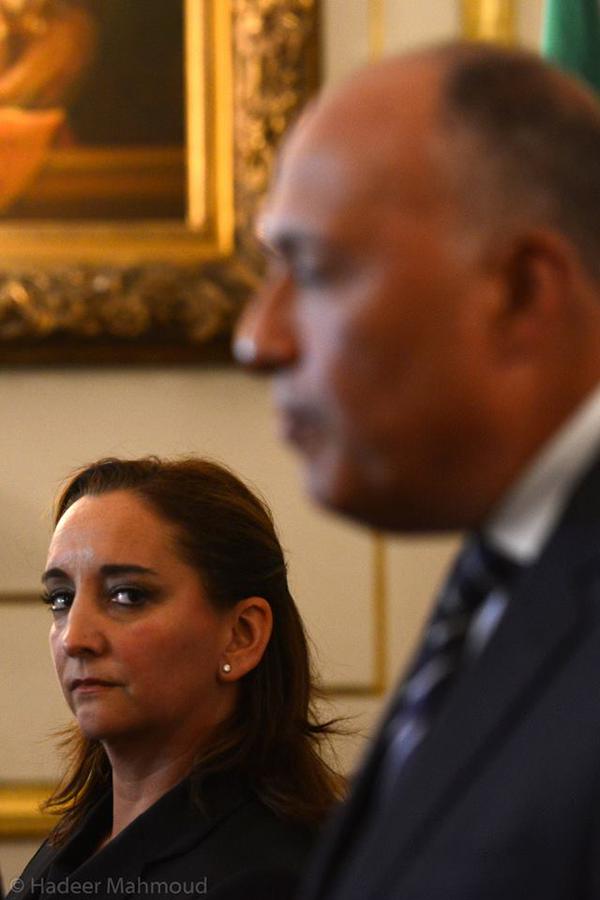
BRIEFS
Publication: Terrorism Monitor Volume: 13 Issue: 19
By:

EGYPTIAN ARMY’S KILLING OF TOURISTS HIGHLIGHTS WESTERN DESERT THREAT
James Brandon
The Egyptian military, on September 15, killed 12 civilians, including at least two Mexican tourists, in an attack on a tourist convoy in the country’s Western Desert (al-Ahram, September 14). According to reports from survivors, the group of 22—who were traveling off-road in four vehicles—were attacked by aircraft and helicopters when they stopped for a break at midday near the al-Wahat area (al-Jazeera, September 15). Details remain confused, with the Egyptian government initially claiming that the tourists did not have the required permit and were traveling in a “restricted zone” at night, although this later was proven incorrect and the tour group appears to have even had a police escort at the time of the attack (al-Bawaba, September 14). The military’s heavy-handed attack, however, aptly illustrates increasing official fears about a growing militant presence along the country’s 700-mile border with Libya, where a range of a Islamist militant groups, including offshoot of the global Islamic State group, remain active.
Just two days before the attack on the tourists, the Egyptian wing of the Islamic State, issued a statement on Twitter, claiming to have clashed with Egyptian soldiers in the Western Desert and to have additionally beheaded an alleged spy for the Egyptian government. According to the statement, the “soldiers of the caliphate” had attacked Egyptian military forces with light and medium weapons, including RPGs, allegedly leading to the government troops “fleeing and dragging their tails in defeat” (SITE, September 13). The largest militant attack in the region to date occurred in July 2014, when around 20 militants attacked an army checkpoint near Farafra Oasis, approximately midway between the Libyan border and the Nile Valley (Mada Masr, July 20, 2014). Previously, in August 2014, the Ansar Bayt al-Maqdis group, a Sinai-based militant organization now affiliated with the Islamic State and known as Wilayat Sinai, shot dead a U.S. oil worker near Karama, on the eastern edge of the Western Desert (al-Ahram, December 1, 2014).
Egypt’s Western Desert is extremely sparsely populated, even so more the country’s Sinai region, where a significant Islamist militant uprising is also underway, and the local population is concentrated along the coast and a several small oasis settlements, often widely separated by tracts of high, inhospitable desert. Nevertheless, the Western Desert region’s small settlements have historically been hubs of illegal trading, often facilitated by strong tribal networks, such as the Awlad Ali tribe, whose historic territory straddles the Libyan and Egyptian border, and a limited police presence. Siwa Oasis, for instance, is a long-standing hub for arms-smuggling operations between Libya and Egypt, as is the coastal city of Mersa Matruh (Youm7, June 1, 2013). Although not widely publicized compared to similar operations in Sinai, military efforts to combat both arms smuggling and potential militant infiltration in the region have been ongoing for some time. For instance, in mid-August, the military destroyed five alleged militant vehicles southeast of Siwa and captured five others; a military aircraft also crashed during the operation, killing its four-man crew (Daily News Egypt, August 14).
Notwithstanding the latest incident, Egyptian efforts to secure the Libyan frontier are likely to rely on such air and ground interdictions rather than, for instance, building a permanent fence or barrier across the border, which would be prohibitively expensive to construct, maintain and police. In light of this, further incidents in the region, both Egyptian Army actions against militants and potential militant attacks in the region on both civilian and governmental infrastructure, should be expected.
KURDISH MILITANTS INCREASE ATTACKS IN IRAN
James Brandon
The last few weeks have seen a significant increase in attacks in Iran by the secular-leftist Party for Free Life in Kurdistan (Partiya Jiyana Azad a Kurdistanê—PJAK), the most significant Kurdish militant group in Iran, which is an affiliate of the Kurdish Workers’ Party (Partiya Karkerên Kurdistanê—PKK) and is based alongside the PKK in Iraqi Kurdistan. In the most notable incident, on August 6, PJAK attacked military installations in the Iranian town of Marivan, near the Iraqi border, claiming to have killed 20 Iranian troops in the operation (Rudaw, August 7). The Iranian government confirmed the attack, but did not provide details on the casualties (IRNA, August 10). A statement issued by PJAK, which particularly referenced Iran’s recent execution of a young Kurdish man for allegedly supporting the group, said that “the Kurdish people do no more accept the occupation and cruelty imposed on them, nor do they leave the attacks of the enemies unanswered” (ANF News, August 26). In response to this and other attacks, Iran has stepped up its own operations in the region. For instance, on August 31, an Iranian Revolutionary Guard Corps (IRGC) commander said that his forces had attacked PJAK forces, “killing a number” of fighters near the Kurdish-majority town of Javanrud, with one Iranian soldier being killed in the fighting (Rudaw, September 1).
The PJAK attacks occur in the context of rising Kurdish national consciousness across the region, evidenced by the creation of an effectively autonomous Kurdish zone in Syria and by an ongoing wave of Kurdish protests and militant violence in Turkey. Kurds make up around ten percent of Iran’s population, and to head off this threat of rising Kurdish nationalism, the Iranian government has in recent weeks begun pursued a carrot and stick policy towards its Kurdish minority; cracking down on Kurdish militants, while offering social and economic incentives to the broader Kurdish population.
As part of the “carrot” approach, Iran’s President Hassan Rouhani made his first official visit to Iran’s Kurdistan region in July, visiting the region’s capital of Sanandaj. In a series of speeches there, Rouhani promised economic and infrastructural development (specifically the building of new dams and roads). He also stressed Iran’s alleged emphasis on religious equality (“Sunni and Shiite are all brothers, we are all equal”) and flattered the locals, paying tribute to “the importance of Kurdistan and its people during the Islamic Revolution and their role in protecting Iran” (Rudaw, July 26). Also in July, Tehran lifted a ban on the teaching of the Kurdish language at Iranian universities and the use of Kurdish in the media, two standing demands of many Iranian Kurds (PressTV, July 27). In a further apparent nod to Kurdish feelings, Iran also appointed a Kurdish scholar, Dr. Saleh Adebi, as ambassador to Cambodia and Vietnam; he is reportedly Iran’s first Sunni Kurdish ambassador (Shafaq, September 3). While many of these gestures are driven by a desire to placate Kurdish feelings, they are also driven by conventional politics: Rouhani received a large number of Kurdish votes in the 2013 presidential election.
At the same time as making such concessions, however, Iran has continued to crack down heavily on Kurdish separatism and militancy. For instance, Behrouz Alkhani, an imprisoned Kurdish activist, was executed by the authorities on August 26, for “effective collaboration” with PJAK and for “enmity against God” (a.k.a. the Iranian government) (Kurdistan Press Agency, August 26). This followed the execution of another Kurdish political prisoner, Sirwan Nejavi, on August 9 (RojiKurd, August 14).
PJAK activism and militancy in Iran is likely to be temporarily constrained by the involvement of the PKK, its much larger and more powerful partner organization, in ongoing fighting in Syria, Turkey and Iraq, and by PJAK’s relative weakness in Iran; Iraqi Kurdish authorities also disprove as they do not want to see their good relations with Iran jeopardized by PJAK attacks on it. Moreover, Iran’s recent concessions to Kurdish feelings, combined with its crackdown on Kurdish militants, may help to partly quell insurrectionary sentiments among Kurds in the short term. In the longer term, however, it seems highly unlikely that Iran will be able to entirely ride out the ongoing wave of Kurdish nationalism, confidence and self-assertiveness that is washing over the region, whether this is expressed through PJAK itself or through other groups that may yet emerge.





